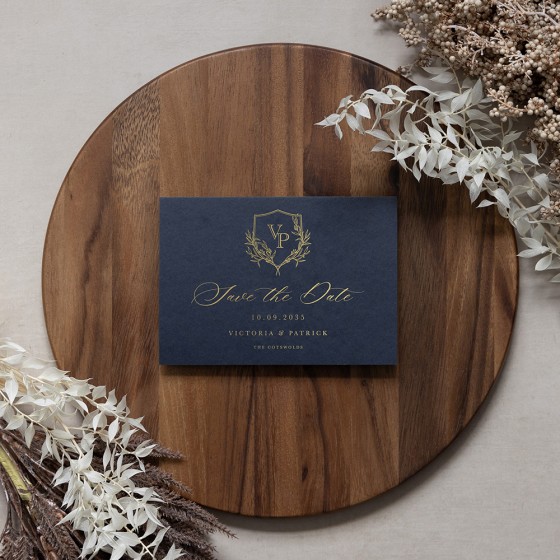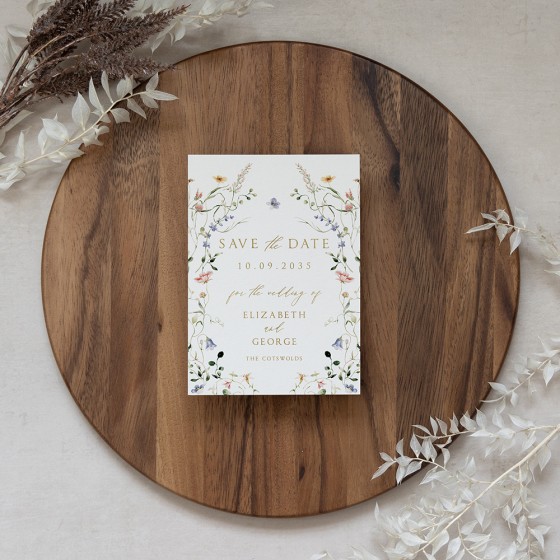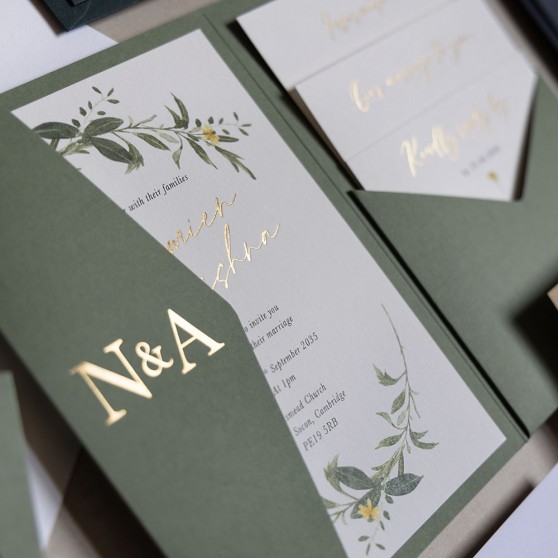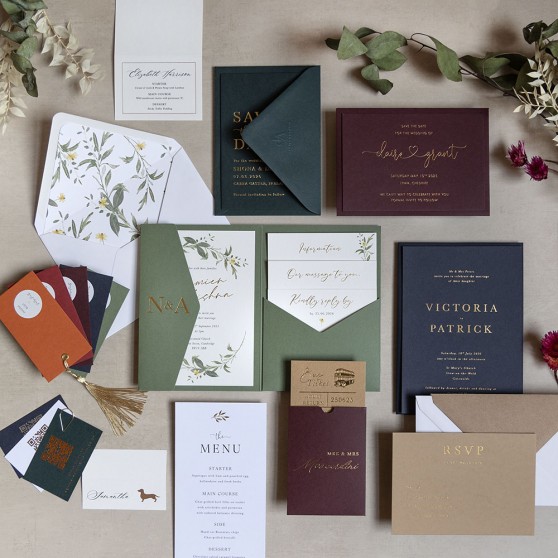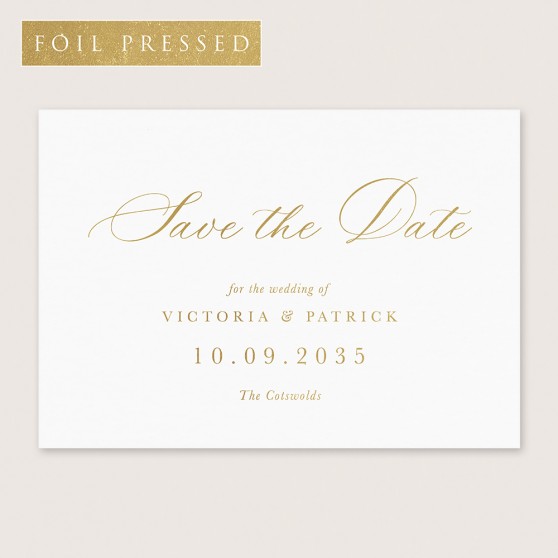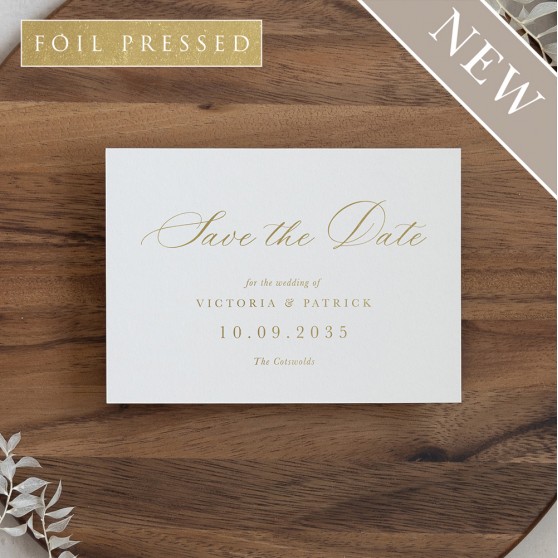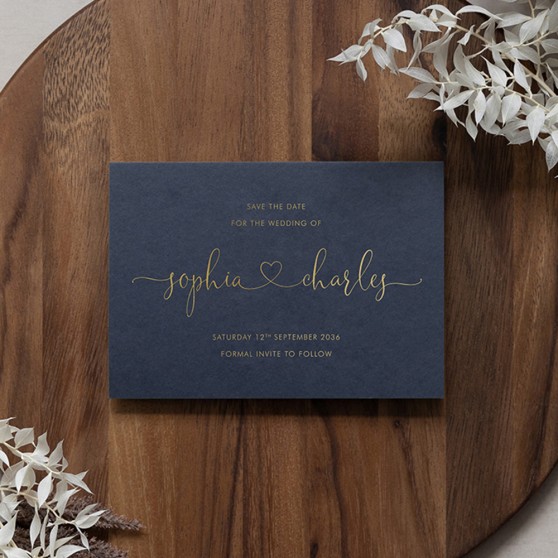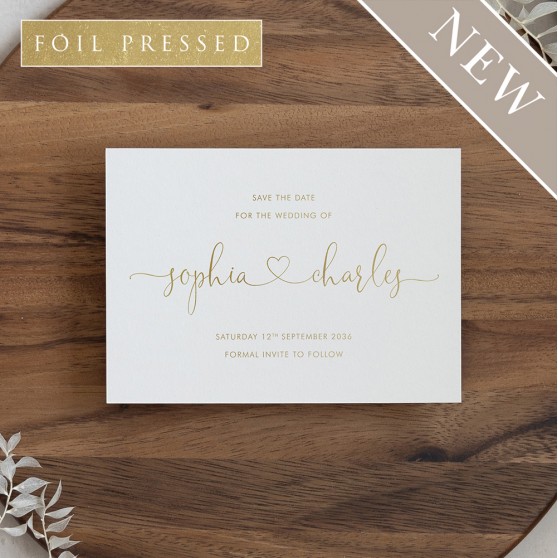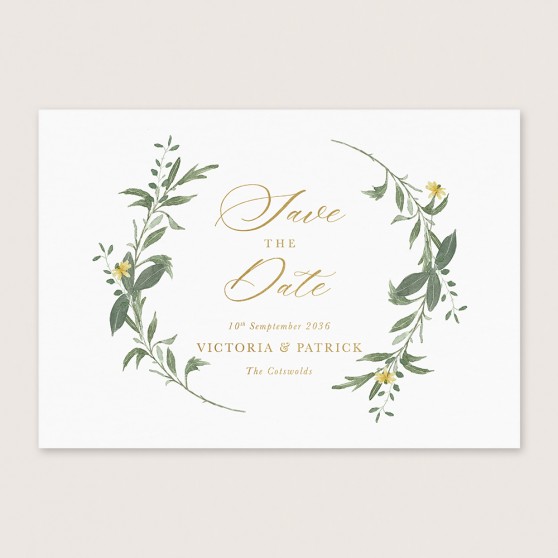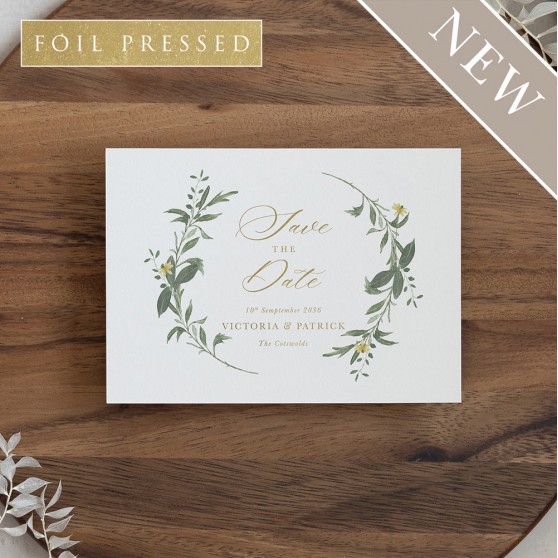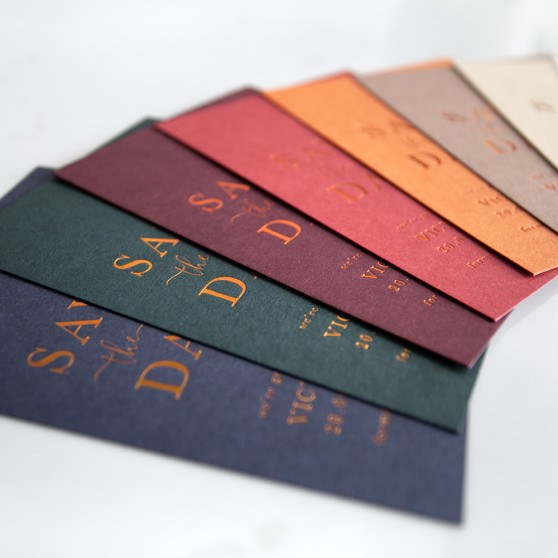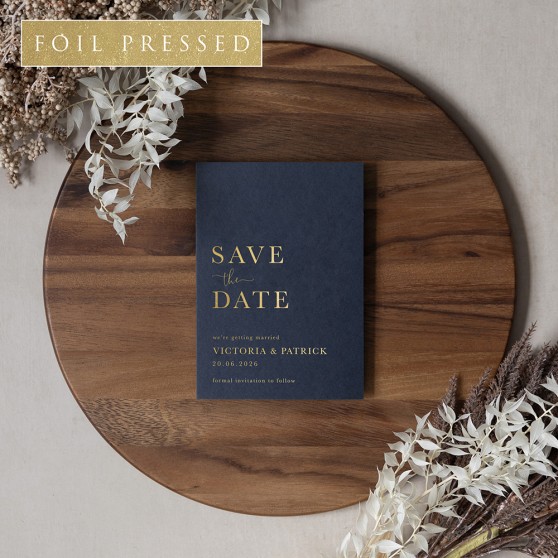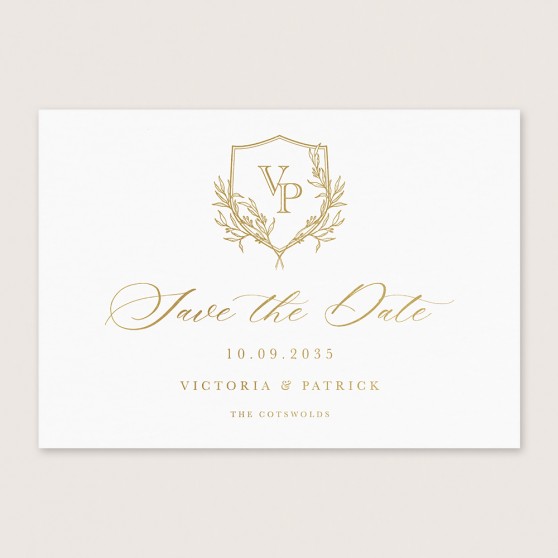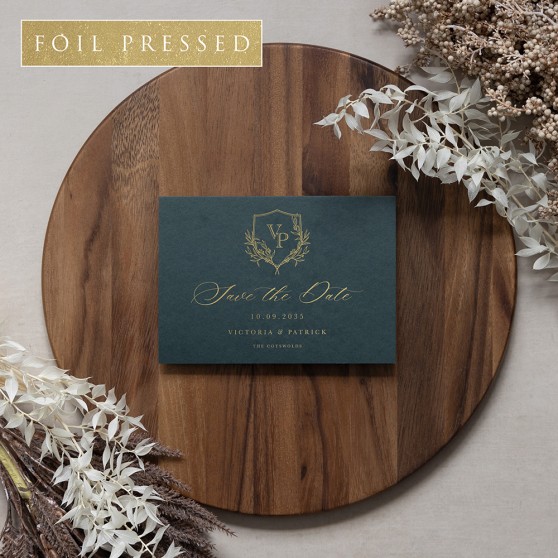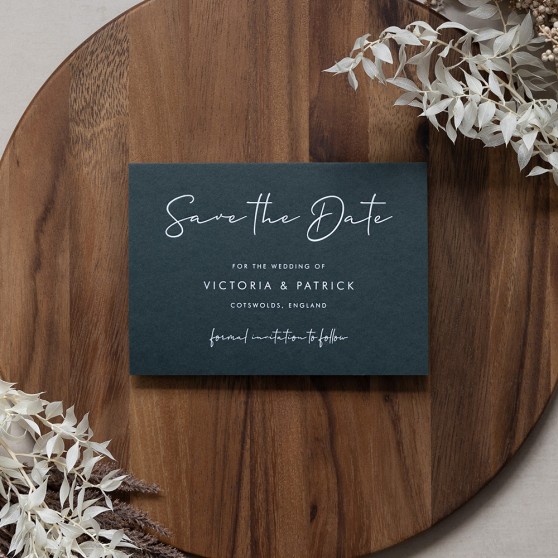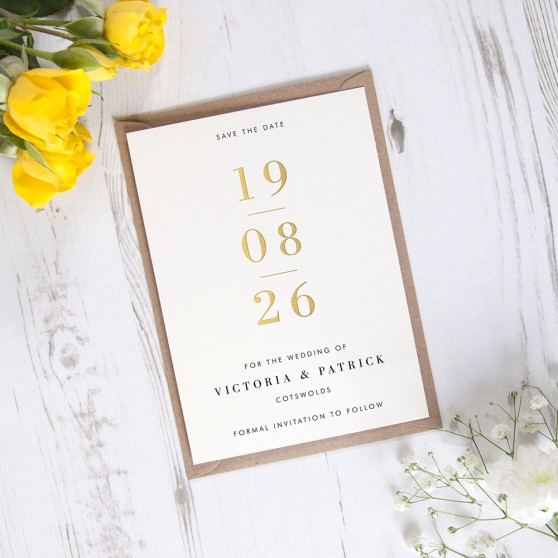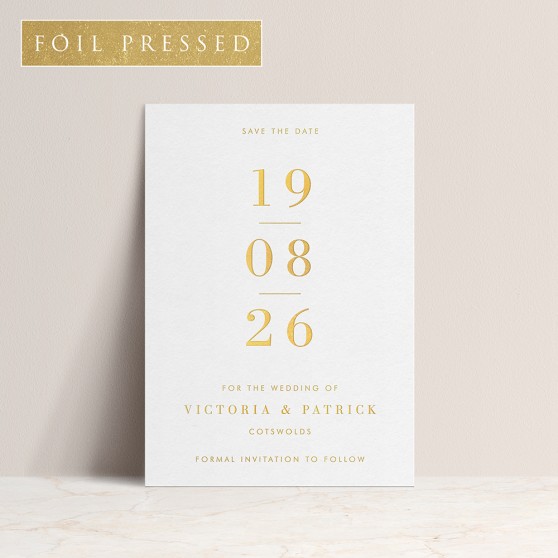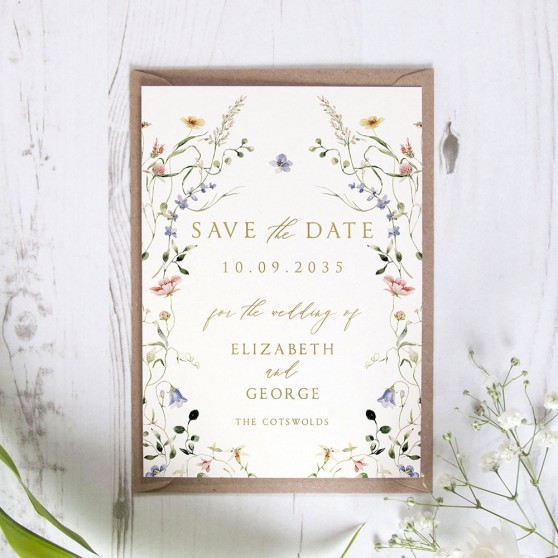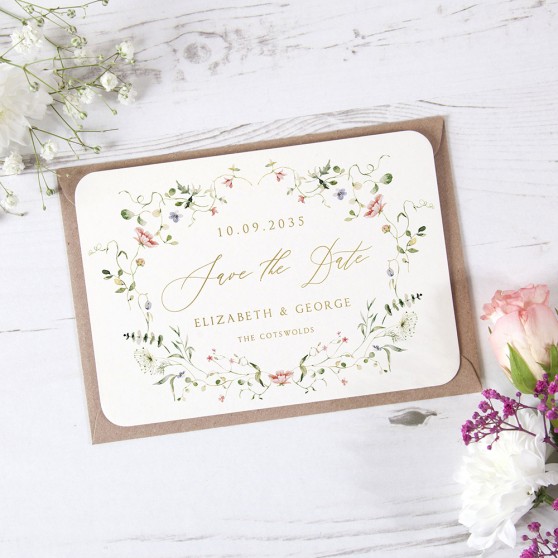What is Foil Pressing?
Foil pressing is a captivating and luxurious technique that adds a touch of elegance to any design. By using heat and pressure, metallic foil is carefully applied to surfaces, creating a stunning reflective finish that catches the light and exudes sophistication. The result is a truly exquisite and memorable product that elevates the overall aesthetic and adds a touch of glamour to everything from invitations to stationery. With foil pressing, you can effortlessly create a lasting impression that leaves a shimmering imprint on your audience's hearts.
Foil pressing is not only visually appealing, but also highly customizable. You can choose from a range of metallic colors and finishes to match your desired look, while its flexibility allows you to use it on almost any surface with ease. Whether you want to add an eye-catching accent or just create something special that stands out from the crowd - foil pressing is the perfect choice. It’s a great way to personalize your projects and make them unique.
But that's not all - the versatility of foil pressing extends beyond the realm of metallic hues. For those seeking a more subtle yet equally captivating effect, matte white foil pressing is an exquisite choice. This option is a magnificent way to create a softer, more understated elegance that's as distinctive as it is delightful. Just like its metallic counterparts, matte white foil pressing creates a beautiful tactile appeal that adds a unique depth and character to your projects. Whether you're looking to create wedding invitations that exude timeless class or business cards with a modern edge, matte white foil pressing offers a striking alternative that is sure to impress.
Why is Traditional Foil Pressing more expensive than digital foiling?
Traditional foil pressing requires a much more involved process than digital foiling. The first step involves heating metal plates with an engraved image or pattern, and then placing them in direct contact with the paper to be printed. This ensures that the design is accurately transferred onto the paper. Meanwhile, with digital foiling, this process is automated and only requires a single machine to do the job. As a result, digital foiling tends to be more cost-effective and faster than traditional foil pressing.
However, while digital foiling does come with its benefits, it's important to note that traditional foil pressing offers a much higher level of quality in terms of both appearance and durability. The metal plates required for traditional foil pressing are incredibly resistant to wear and tear, which means that they are able to produce a much more satisfying finish than digital foiling can. This makes traditional foil pressing an ideal option for creating projects that will last for years to come.
At the end of the day, whether you choose traditional or digital foiling comes down to personal preference. Both have their own unique advantages and drawbacks, making it important to consider the unique needs of your project before making a decision. If you're looking for a high-quality finish that will stand the test of time, then traditional foiling is definitely worth considering. On the other hand, if speed and affordability are key factors in your decision, then digital foiling may be the best option for you. No matter which approach you take, foiling is an incredibly unique way to make your project stand out from the crowd.
What is Digital Foiling?
Digital foiling, also known as digital foil stamping, is a modern method of applying metallic foil to paper and other substrates. Utilising heat and pressure, digital foiling imprints a thin layer of foil onto the material, creating a shiny and eye-catching effect. It's a fantastic technique for adding a touch of elegance and luxury to printed materials, from business cards to wedding invitations.
The key distinguishing feature of digital foiling compared to traditional foiling is its use of digital technology. This innovative method doesn't require the use of metal dies or plates. Instead, a special type of foil is applied to the areas designated for foiling in the digital design. As a result, digital foiling offers greater flexibility with designs, faster turnaround times, and lower costs for short to medium print runs. However, it's worth noting that the finish quality may not match the depth and lustrous nature of traditional foil stamping.
Why is foiling popular in the wedding stationery industry?
Foiling is a highly popular choice for wedding stationery thanks to its ability to instantly add an air of luxury to any design. By using metallic foils, you can create truly one-of-a-kind designs that will help make your wedding invitations stand out from the crowd. In addition, the raised finish of traditional foil stamping provides a tactile element that makes it difficult for your guests to ignore.
The impressive range of colours available also adds to foiling's popularity, as you can combine different shades and hues to create a unique look. From rose gold and silver to copper and holographic finishes, there really is no limit when it comes to creating an unforgettable design. Digital foiling even allows you to add intricate metallic patterns and designs, from delicate stars to glittery rainbows.
So if you're looking for a customised wedding stationery design that oozes luxury, foiling is the perfect choice. With its versatility, affordability and superior finish, it's no wonder why so many couples choose to add some shine to their special day with this timeless technique.
What is Cardstock GSM?
Cardstock GSM refers to the weight or thickness of cardstock paper, typically measured in grams per square meter. It is an important factor to consider when choosing cardstock for various printing projects. The higher the GSM number, the thicker and more durable the cardstock will be. This measurement affects the overall look and feel of printed materials, making it essential for achieving the desired quality and impact in marketing collateral such as business cards, invitations, flyers, and more.
Factors Affecting Cardstock GSM
The following factors can influence the GSM of cardstock paper:
- Fiber Content: The type and amount of fibers used in making the paper can affect its weight. Generally, cardstock with a higher percentage of fiber will have a higher GSM.
- Coating: Cardstock papers can come with various coatings, such as glossy or matte, which can add weight to the paper and affect its GSM.
- Sizing: The sizing agents used in papermaking can impact the weight and thickness of cardstock. These agents control the absorption rate of ink on the surface of the paper.
- Caliper: The caliper or thickness of cardstock can affect its GSM as a thicker sheet will weigh more than a thinner one.
- Finish: The finish of cardstock, such as embossed or textured, can also contribute to its GSM.
What GSM does Vintage Prints use?
At Vintage Prints, we're all about choosing the perfect cardstock GSM to fit every printing project, making sure everything looks elegant and lasts long. For those fancy foil pressed items, we've got an awesome selection of thick, premium cardstocks - think 330, 350, and the super luxurious 700gsm. This lets us add that special touch to eye-catching invitations, business cards, and other foil stuff that really needs to pop. For everything else, we stick to 330 and 350gsm to keep the quality high and versatile. These GSM choices help us nail the printing quality for a variety of projects, always keeping our clients' needs and tastes in mind.
What classifies as a nice thick card?
When we talk about a nice thick card, we're usually talking about cardstock that feels heavy and sturdy - think high GSM (grams per square meter) numbers. In the cardstock world, anything over 300 GSM is what you'd call thick. It gives anything you print a more luxurious and professional vibe. At Vintage Prints, we consider anything with a GSM of 330 or more as our go-to for that "thick" quality. Perfect for making things like wedding invites, business cards, and fancy announcements really stand out. Plus, that extra weight doesn't just look good; it means your card can handle being passed around without getting all bent out of shape. It's a way of showing whoever gets it that you've put in that extra bit of effort and care.


